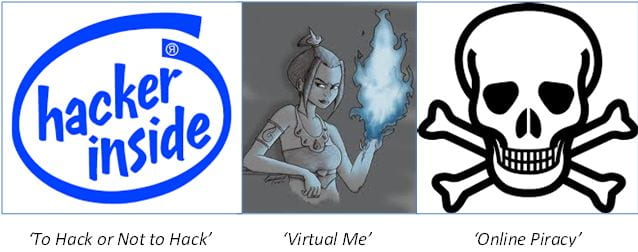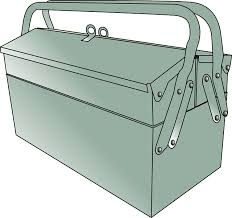In the previous project you worked on getting smarter at judging online postings for how credible or trustworthy they are. In this project you will get to use your critical thinking glasses again. In the previous project you focussed on fact versus opinion, and making judgements about source (remember the name of the strategy?).
What do I have to do?
Have you ever found that what you are reading online can be:
- at a more difficult reading level than you feel comfortable with;
- require using problem solving strategies to understand;
- require critical problem solving strategies to read beyond what is being said.
We are going to design a reading critic’s toolbox to develop these skills. You can carry this thinking toolbox with you online, into the classroom, exam room and into the world of work when you leave school.
Task 1 – Find yourself a picture of a toolbox or a briefcase or any custom made bag you want to use as your personalised toolbox. Save your picture to a Google doc. As you learn each of the reading critic’s tools, you are going to update this toolbox visual by decorating with labelled images of the strategies you learn.
Task 2 – The first two strategies you are going to use as a reading critic of online webpages is chunking and clarifying. Design labels of ‘chunking’ and ‘clarifying’ for the toolbox.
Task 3 – Now you will need some text to try your two strategies with. To do this you need to think about an issue that interests you from one of the three below:
Task 4 – Link to each of the sites listed for the issue you have chosen in the Big Issues Sources. Get a sense of the ideas for the issue you have chosen by connecting to each of the links.
Task 5 – Out of the links you read choose one article that you found more challenging than the others to understand. Don’t choose one you were comfortable with as you are going to use your reading critic toolbox skills to help you handle more complicated online reading.
Task 6 – Make a copy of the online text you have chosen to a Google Doc and get ready to chunk!
Task 7 – Chunking involves a simple three part strategy:
- Read a sentence. Stop! Ask yourself, “What does it mean?”
- Make connections – by paying attention to clue words (what comes to mind when notice a clue word – what does it remind you of? Can the word be broken down into parts that make sense?)
- Make a visual note – usually mentally (but we want to raise your awareness, so we will be highlighting, drawing and/or labelling on the text itself)
Here’s an example of using the ‘chunking strategy’ with the first sentence from an online web page that is quite difficult to understand:
Task 8 – Use the chunking strategy (1. Stop! What does it mean? 2. Make connections 3. Visualise) on the first couple of sentences of the article you found challenging to read. Make a Google doc and use highlights, graphics and text boxes to make connections and visualise.
Task 9 – Now you have learnt to ‘chunk’ it is also important to be able to ‘clarify’. Because some of the sentences you try to ‘chunk’ still won’t make sense, maybe because the words can’t be broken down, or you won’t be able to make any connections. Then clarify by:
- Ignoring the unclear part and read on to see if it becomes clearer as you read on. Sometimes what is meant is covered later on in the paragraph
- Rereading the unclear part much more carefully and closely
- Getting help from outside (peers, teacher, other resources like an online dictionary)
Task 10 – Look at an example of some ‘clarifying decisions’ on the same reading about stem cell research. Copy the rest of the first paragraph of your challenging text into your Google doc. Finish recording your ‘chunking’ and ‘clarifying’ decisions by highlighting, illustrating and recording your connections. Share your learning with a parent/caregiver.

